Data mapping is the process of connecting a data field from one source to a data field in another source. Data Source Mapping can be used to map data and add additional custom Data Columns to a Data Table using formulas, expressions and queries.
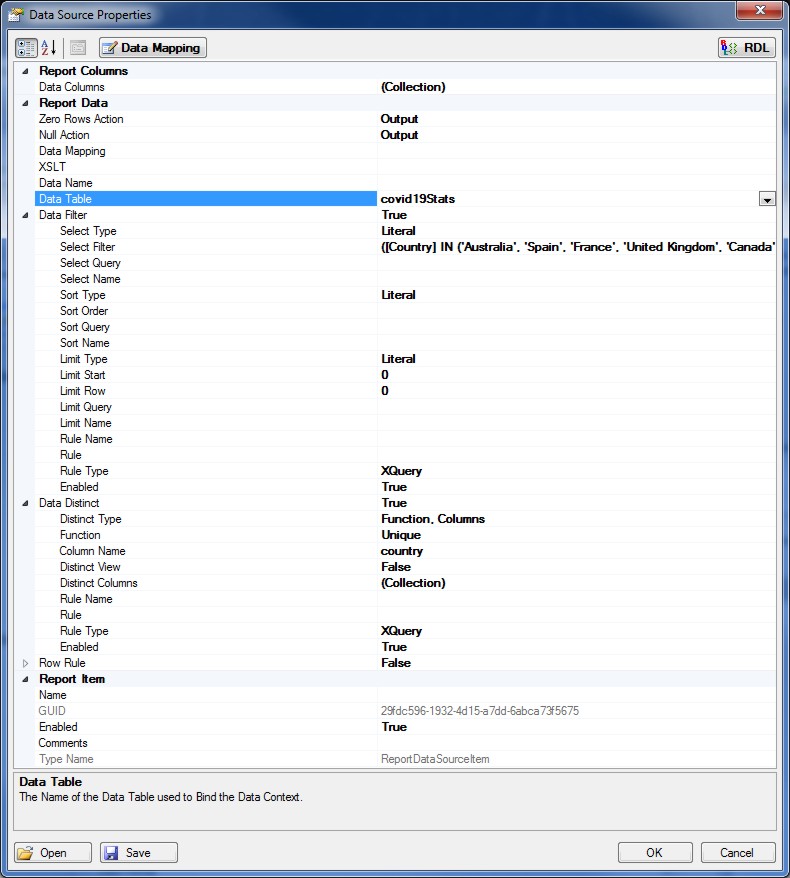
Click the Designer button to open the Data Source Designer for Data Mapping. Select the Table Name from the drop-down list and then add the Data Columns to include and the order in which they should be presented.
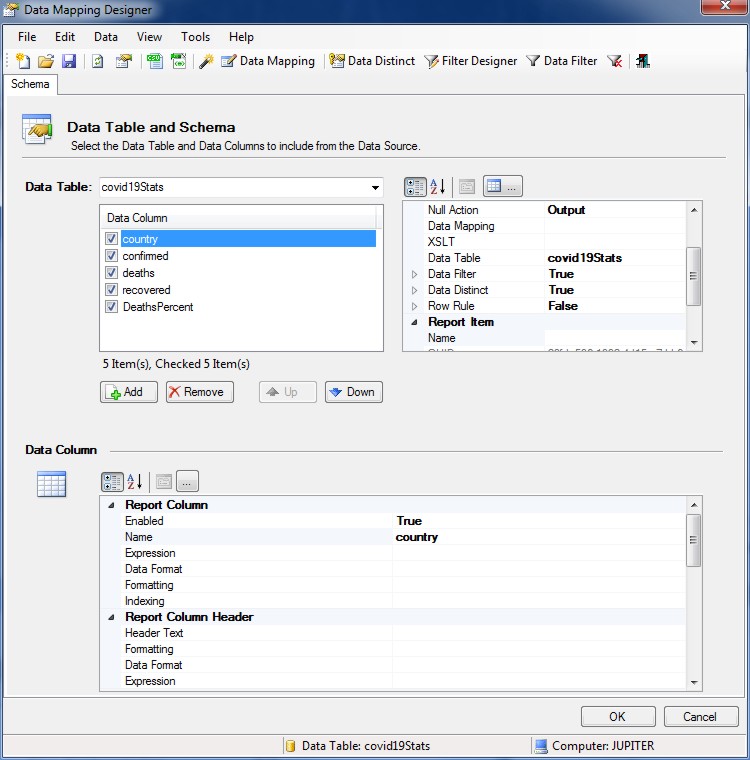
Add Data Columns to the Report Chart Data Mapping and design formulas, expressions and queries accordingly to create the custom data.
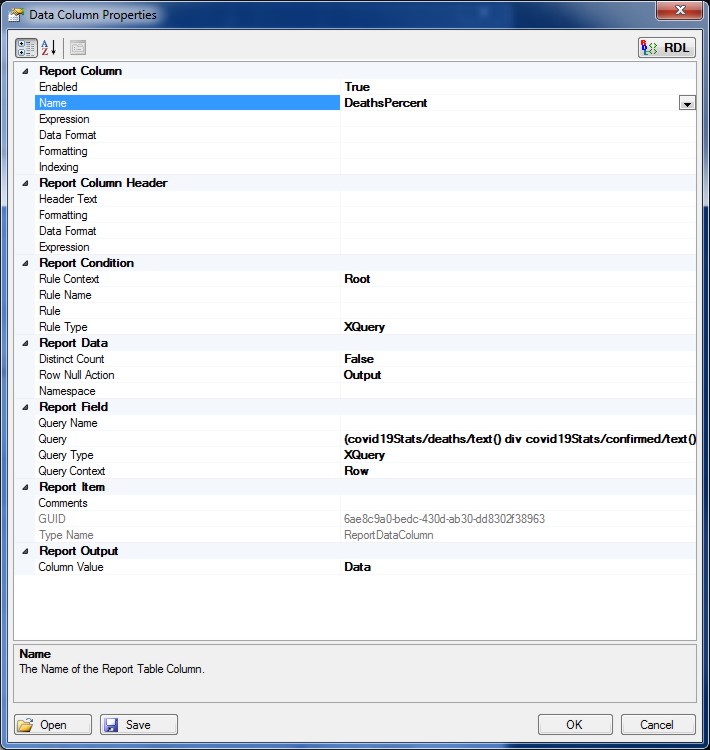
Click the OK button to add the Data Column to the Data Source Mapping.
Data Filters can be applied to Data Mapping for filtering and sorting.
To enable Data Filtering click the Data Filter (...) property button to open the filter properties page.

Data Filters can be used to select and sort data from Data Tables returning specific results and / or rearranging into some meaningful order.
For example, if a Select Filter is applied for Fee Name = 'Cool Doc Fee' then only the data with this criteria will be output in the Report Chart.
Report Queries as an either an XQuery or Python expression to query the Report Data can also be used for Data Selection, Data Sorting and Data Limits.
Data Row Limit
The number of Data Rows in the Data Table can be limited by specifying a Row Limit. Open the property page for the Data Filter and enter a limit for the Data Rows.
Data Distinct
Data Distinct determines how data is summarized with special functions for summarising data by Sum, Average, Count, Max, Min, First, Last and Exists.

Data Distinct can be applied as a Function and / or to individual Data Column(s).
Select the Distinct Type and choose the Distinct Column(s) and Data Formatting if required.
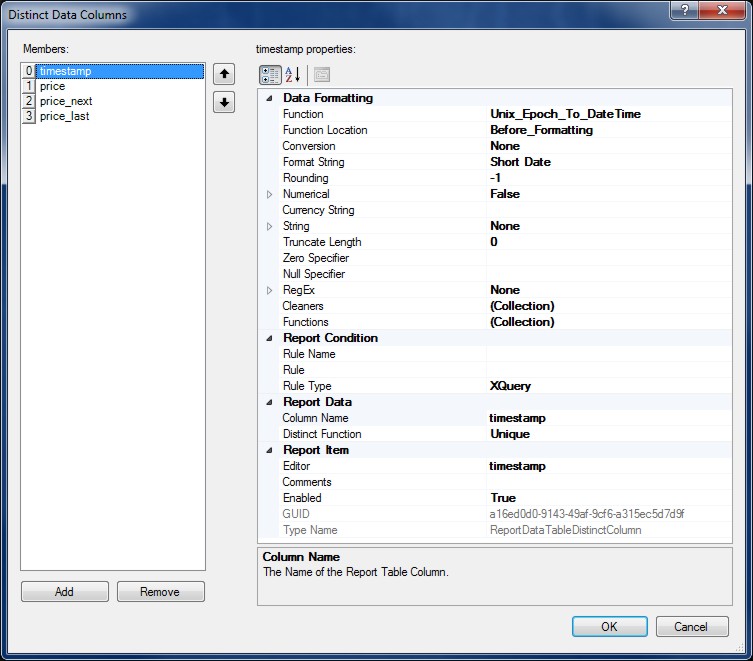
Enable Distinct Values and choose the relevant Data Column(s) and function for the Data Table according to how the data needs to be summarised or presented.
Data Filter Designer
The Data Filter Designer is a powerful tool to help with the design and application of Data Filtering and Sorting on Data Columns.
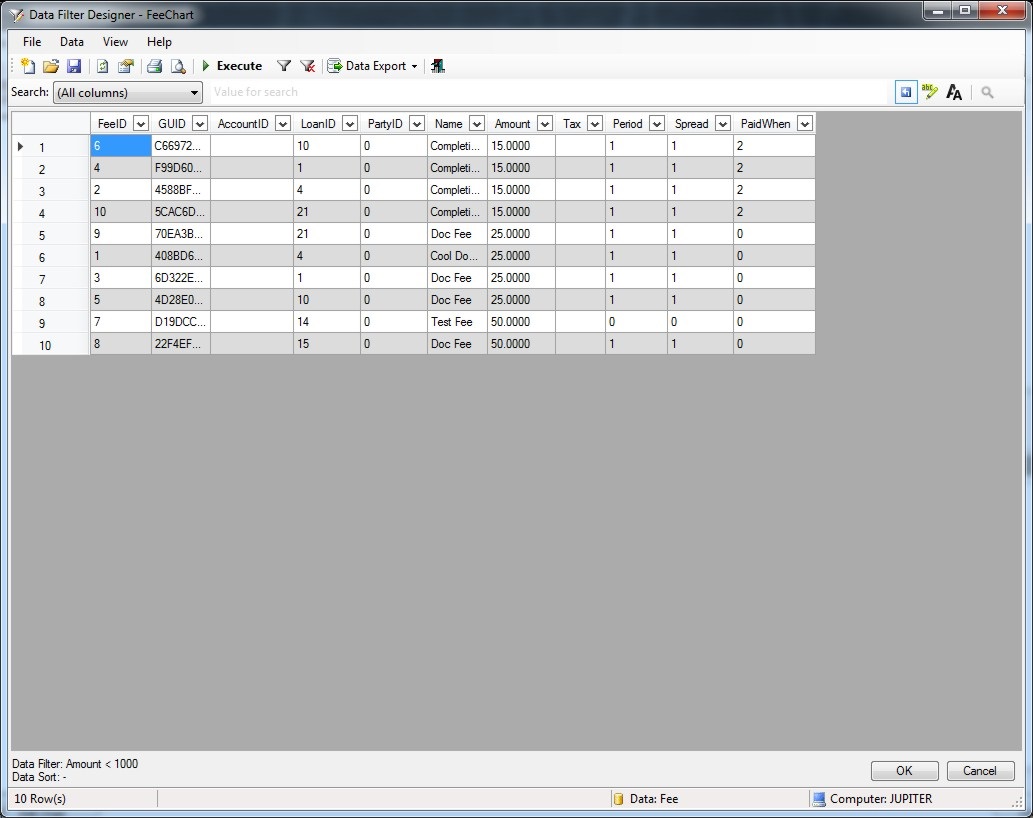
Select the Data Columns to filter and / or sort from the drop-down lists.
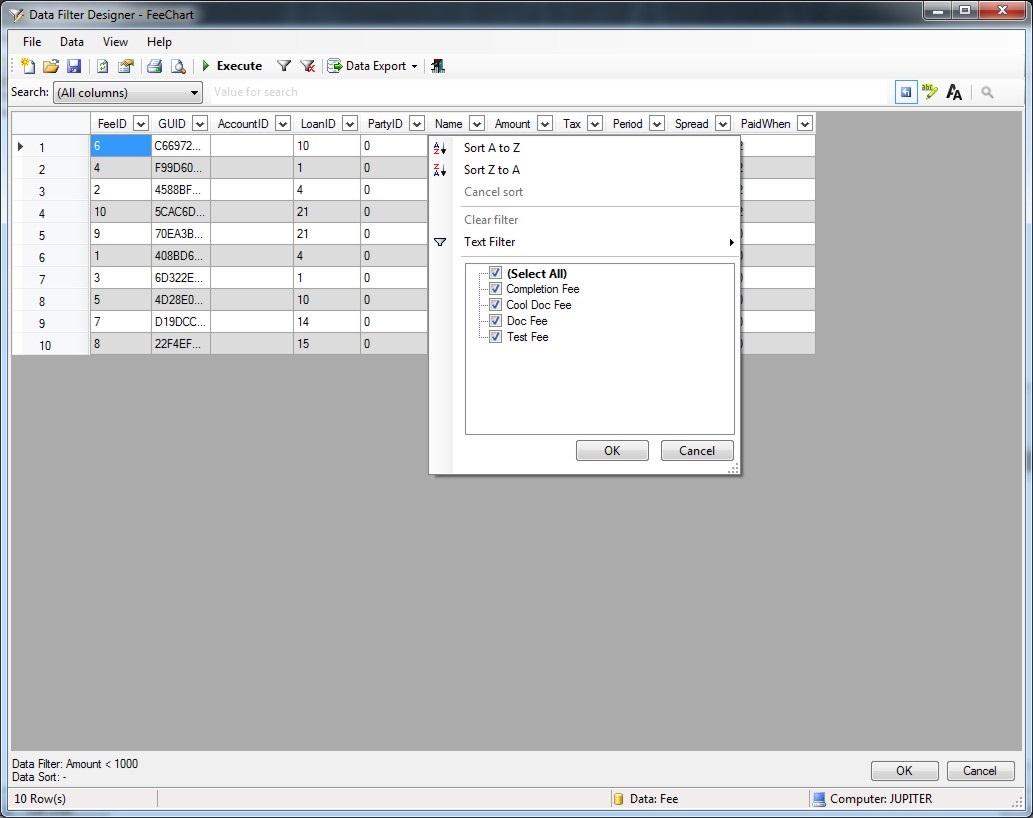
Click the 'Execute' button to view the filtered data output and then OK to apply to the Report Chart.
Data Manipulators
Data Manipulators provides methods to prepare and manipulate data for technical analysis, apply formulas on the data and prepare output data.
Advanced formulas and financial analysis such as forecasting can be used to output forecast data and trends.
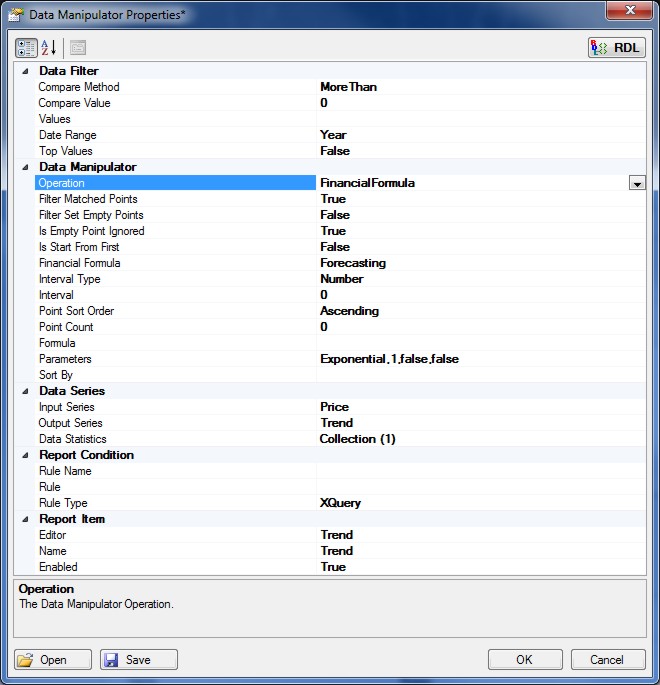
Sorting, grouping and filtering operations can also be applied using multiple data manipulators.
Report Data Statistics
Report Data Statistics provides additional methods to make calculations on data using statistical formulas for technical analysis.
Advanced methods such as an ANOVA (Analysis of Variance) test to determine whether there is a statistically significant difference between the mean values of two or more groups of data.
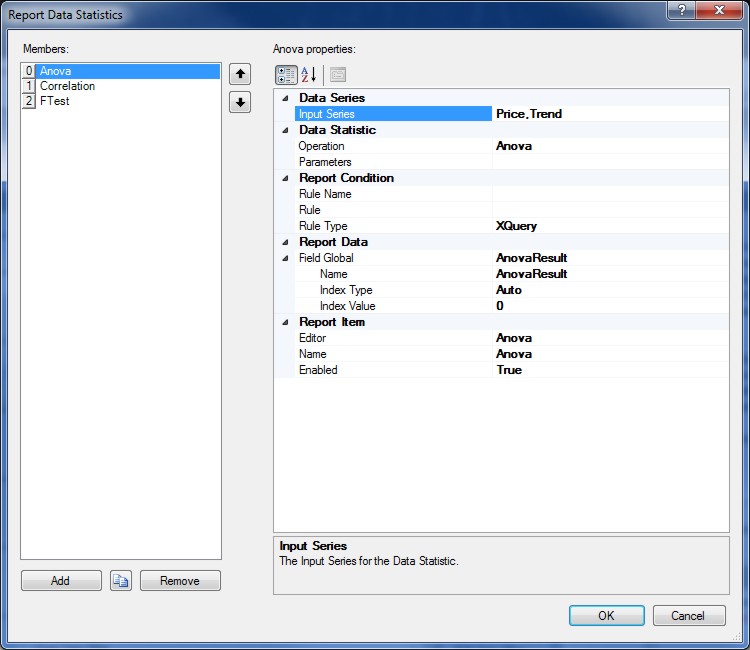
Specify the Input Series for the Data Statistic and the Report Data Field Global to store the Output Data.
Multiple Data Statistics can be applied to a Report Data Manipulator with different statistic formulas and operations.
Report Charts can be defined with Report Data Contexts which are used to drive and build Report output content and also allows the consolidation and integration of data from multiple different sources and types such as API's, websites and data files to be read and used in the Report.
Data Contexts can be applied to specific Report elements allowing data in XML documents to be contextually enumerated. The default Data Context is the Report Data Source (XDM) root node and if no Data Context is specified then the current Report Data Source will be used.
To apply a Data Context to a Report element expand the Data Context property or click the (...) property button and specify the Content Type as either a Literal (Constant) or a File.
Context Types can be either XQuery, Python, XML, XLS, XLSX, CSV, JSon or HTML.
Report Rules are conditional XQuery or Python expressions that determine if Report content is enabled and applied to the build. Rule based queries return a Boolean that is either True or False and can query the Report Data Source and other Report Data Contexts. Rules are used for controlling the flow, visibility and activation of reporting content.
Report Rules if empty or null by default will always return True.
Report Namespaces are used for providing uniquely named elements and attributes and is a mechanism to avoid name conflicts by differentiating elements or attributes within an XML document that may have identical names, but different definitions. If the Report Data Source contains namespaces they can be applied to the XQuery Processor.

